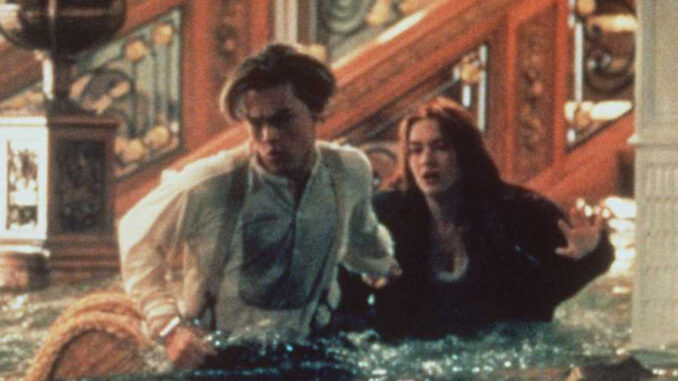
The whispers of the sea always carry tales, but few echo with the haunting resonance of the Titanic. A century and a decade after its ill-fated voyage, the glittering, doomed vessel remains anchored in the collective imagination, a poignant monument to human hubris, class disparity, and tragic romance. For generations, James Cameron’s epic film has defined this legacy, cementing the love story of Jack Dawson and Rose DeWitt Bukater as its beating heart, and Jack’s noble, icy demise as its unforgettable, tear-jerking climax. But what happens when science, with its cold, hard facts and unwavering logic, dares to challenge the very core of this beloved narrative? The recent assertion by a scientist that Jack didn’t have to die isn't just a trivial observation; it’s a ripple that ignites a debate far deeper than buoyancy, touching the very nature of storytelling, sacrifice, and our enduring relationship with fictional worlds.
Cameron’s Titanic masterfully crafted a narrative that transcended mere historical recreation. It was a grand opera of human emotion, set against a backdrop of unprecedented disaster. Jack’s death, as he valiantly surrendered his space on the floating debris to ensure Rose’s survival, was the ultimate act of self-sacrificing love. It cemented their legend, ensuring Rose's life was a testament to his memory, her heart "going on" for him. His pale, frozen face slipping beneath the icy grasp of the Atlantic, while Rose clung desperately to the wooden panel, became an iconic image of cinematic tragedy. This was not merely a plot point; it was the emotional crucible, the final, agonizing twist that transformed a love story into a timeless myth. The artistic choice was clear: Jack had to die for Rose to truly live, for their love to be immortalized, and for the film’s tragic power to resonate.
Enter the scientist, armed with calculations of mass, displacement, and thermal dynamics. The argument, often revived in various forms over the years (and even famously tested by MythBusters), posits that the door Rose clung to, if properly balanced or with minor adjustments, could have supported both their weights. The scientific community, or at least segments of it, approaches this as a solvable physics problem, detached from emotional baggage or narrative necessity. It suggests that Jack’s death wasn’t an inevitability of the sinking, but a preventable outcome – perhaps even a miscalculation on the part of the fictional characters, or more pointedly, the film’s writers.
This "reignited debate" is fascinating precisely because it pulls at the threads of multiple human instincts.
Firstly, there's the human desire for a different ending. We invest so heavily in these characters. We root for them, we weep for them. The idea that Jack's death was avoidable offers a tantalizing "what if," a chance to rewrite the most painful chapter. It’s a whisper of hope against the crushing weight of tragedy, a fantasy of altering fate. This urge to "fix" a sad story speaks to our deep-seated aversion to arbitrary loss and our longing for control, even over fictional universes.
Secondly, it highlights the inherent tension between scientific truth and artistic license. Science demands empirical evidence, consistency, and objective reality. Art, conversely, thrives on emotional truth, symbolic meaning, and narrative impact. Cameron's decision to kill Jack was not a scientific oversight; it was an artistic choice that served the story’s themes of sacrifice, memory, and enduring love. When a scientist says "Jack didn't have to die," they're not merely correcting a physics error; they're implicitly challenging the very narrative structure and the emotional landscape it created. Does adhering to perfect real-world physics always make for a better story? Or does the narrative truth sometimes supersede the literal truth?
Thirdly, the debate resurfaces our collective fascination with the Titanic itself. It is not just a ship; it is a symbol. It embodies the hubris of the Gilded Age, the brutal indifference of nature, and the raw courage and despair of humanity. Every new piece of information, every fresh perspective, reignites interest in this enduring saga, keeping its legacy afloat in the cultural consciousness. The "Jack and Rose" debate becomes a modern way to engage with the larger Titanic mythos, a relatable entry point into the historical tragedy.
Finally, it speaks to our relationship with popular culture and its authority. For decades, Jack’s death was unquestioned, an immutable law of the Titanic universe. Now, an external force – science – steps in to challenge that law. It sparks a playful, yet earnest, argument among fans, critics, and even the original creators (Cameron himself has humorously weighed in over the years). It underscores how deeply we internalize these fictional worlds and how protective we can be of their internal logic, even as we acknowledge they are constructed realities.
In the end, whether Jack truly could have shared that door with Rose might be a fascinating scientific conundrum, but it hardly diminishes the profound impact of his cinematic sacrifice. The "reignited debate" isn’t about correcting a historical error, for the film is fiction woven around history. It’s about our persistent human yearning for alternative outcomes, our playful engagement with beloved stories, and the eternal clash between cold logic and the passionate, often irrational, heart of narrative. Jack’s death, necessary or not by physics, was undeniably necessary for the legend he became. And in the vast, echoing silence of the deep, the faint whispers of a boy who died for love continue to resonate, undisturbed by the laws of buoyancy. The door may have been big enough, but the narrative required it to remain a solitary raft for one.
